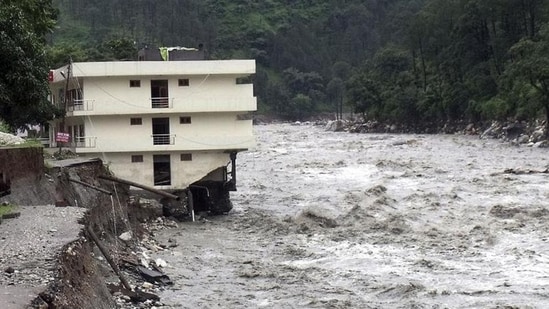
PATTERN OF EXTREME CLIMATE EVENTS ACROSS INDIA CHANGING: STUDY
There is a shifting pattern of extreme climate events across Indian districts according to a new report released on Friday. Some floodprone areas are now becoming susceptible to droughts and vice versa; often a combination of both hazards are being seen, the report added.
In the past two decades more than 80% districts in Gujarat have witnessed an increased frequency and intensity of extreme floods as per the analysis by IPE Global and Esri-India. This may explain the devastating floods in Saurashtra this year too.
ALSO READ- ‘Global approach to deal with climate change flawed’
The number of districts that have transitioned from experiencing floods to facing droughts (149) surpasses those that have shifted from droughts to floods (110).
In Southern India, states such as Andhra Pradesh, Tamil Nadu, and Karnataka, are witnessing a notable increase in drought conditions. as are parts of western and central India.
“The findings indicate that drought events are becoming more severe across the Indian subcontinent which can also be linked to increase in number of heat wave days,” the report states.
Over 85% of Indian districts are prone to flood, drought, cyclone and heat waves, and 45% of them are witnessing a swapping trend, according to the analysis.
ALSO READ- Climate change disrupting education outcomes, increasing learning loss: UNESCO report
The frequency, intensity, and unpredictability of these climate extremes have also risen in recent decades by four-fold.
Using a penta-decadal analysis, the study compiles a catalogue of extreme climate events over a 50-year historical period from 1973 to 2023 by employing spatial and temporal modelling.
“The current trend of catastrophic climate extremes that makes 9 out 10 Indians exposed to extreme climate events are a result of 0.6 °C temperature rise in the last century. El Nino is gaining momentum and making its early presence felt across the globe with India facing the extreme events turbulence more in patterns than waves,” said Abinash Mohanty, Head- Climate Change and Sustainability Practice at IPE Global and the author of the study. One of the findings of the study was that at least 60% of districts in Bihar, Andhra Pradesh, Odisha Gujarat, Rajasthan, Uttarakhand, Himachal Pradesh, Maharashtra, Uttar Pradesh, and Assam witness more than one extreme climate event.
ALSO READ- In Pics: World records hottest summer ever amid climate change woes
“Recent Kerala landslides triggered by incessant and erratic rainfall episodes, floods in Gujarat, disappearance of Om Parvat’s snow cover and the cities getting paralysed with sudden and abrupt downpour is a testament that climate has changed. Our analysis suggests that more than 1.47 billion Indians will be highly exposed to climate extremes by 2036,” added Mohanty, who believes “embracing hyper-granular risk assessments and establish climate-risk observatories and infrastructure climate fund should become a national imperative .”
HT reported on June 25 that India’s summer monsoon is undergoing significant changes, influencing not just agriculture — for which the rains are a lifeblood — but also the length and intensity of the summer.
Recent data from the India Meteorological Department showed a trend of weaker monsoon rainfall in June, followed by prolonged, heavy rainfall in September. This shift is accompanied by rising temperatures during monsoon months and an increase in the number of dry days over eastern India.
Read more news like this on HindustanTimes.com
2024-09-07T19:22:26Z dg43tfdfdgfd